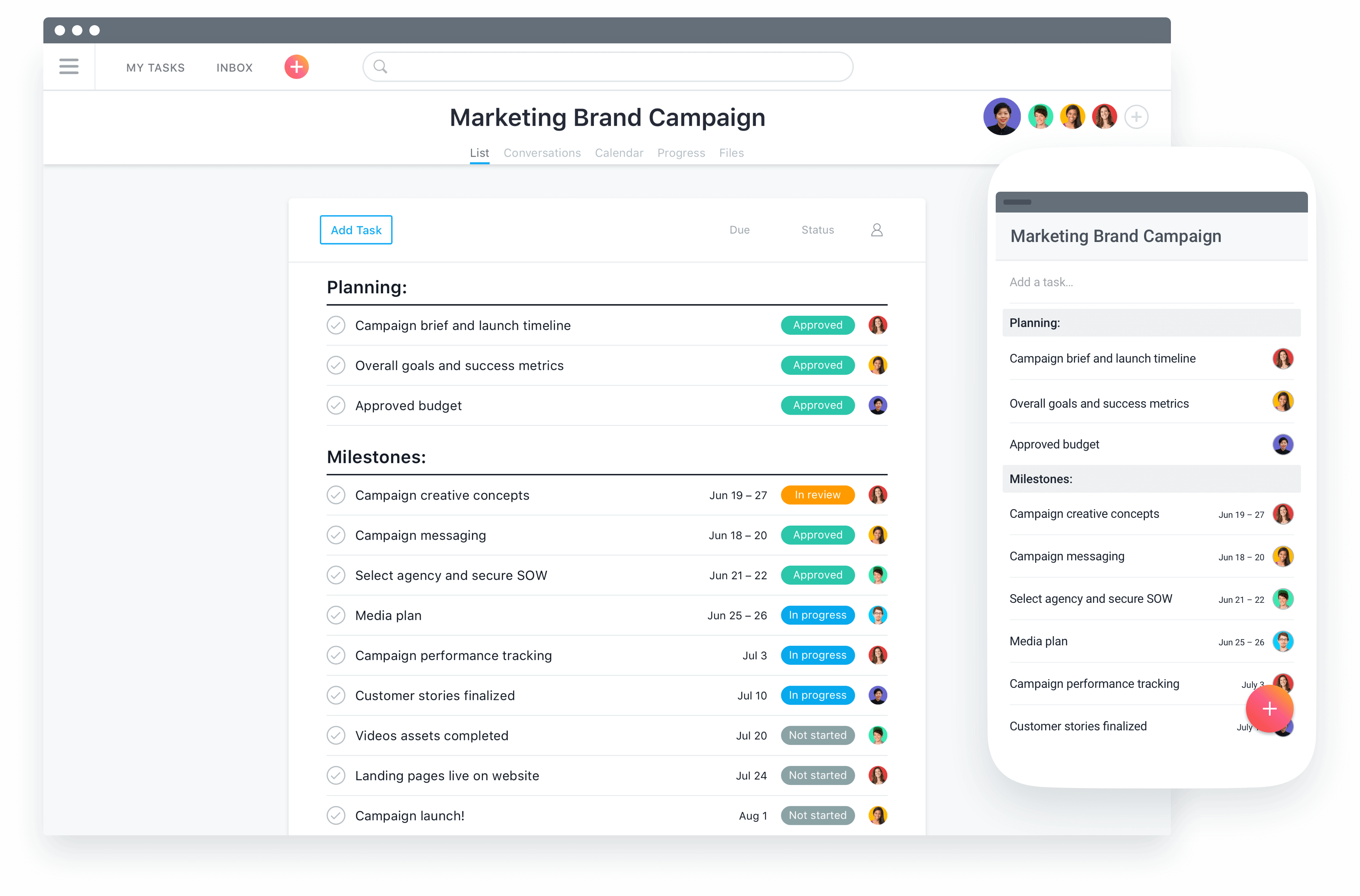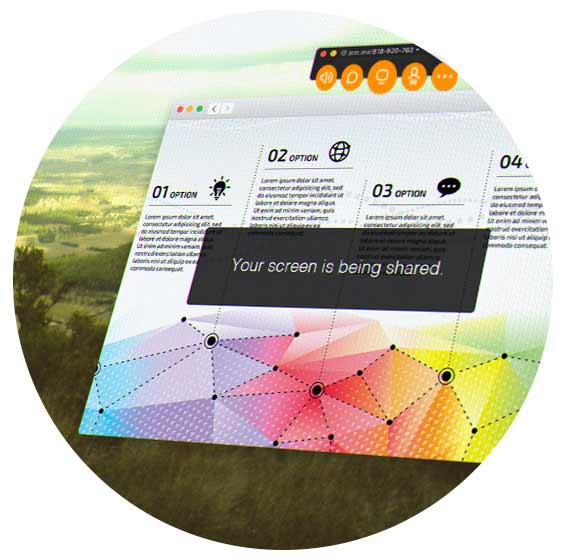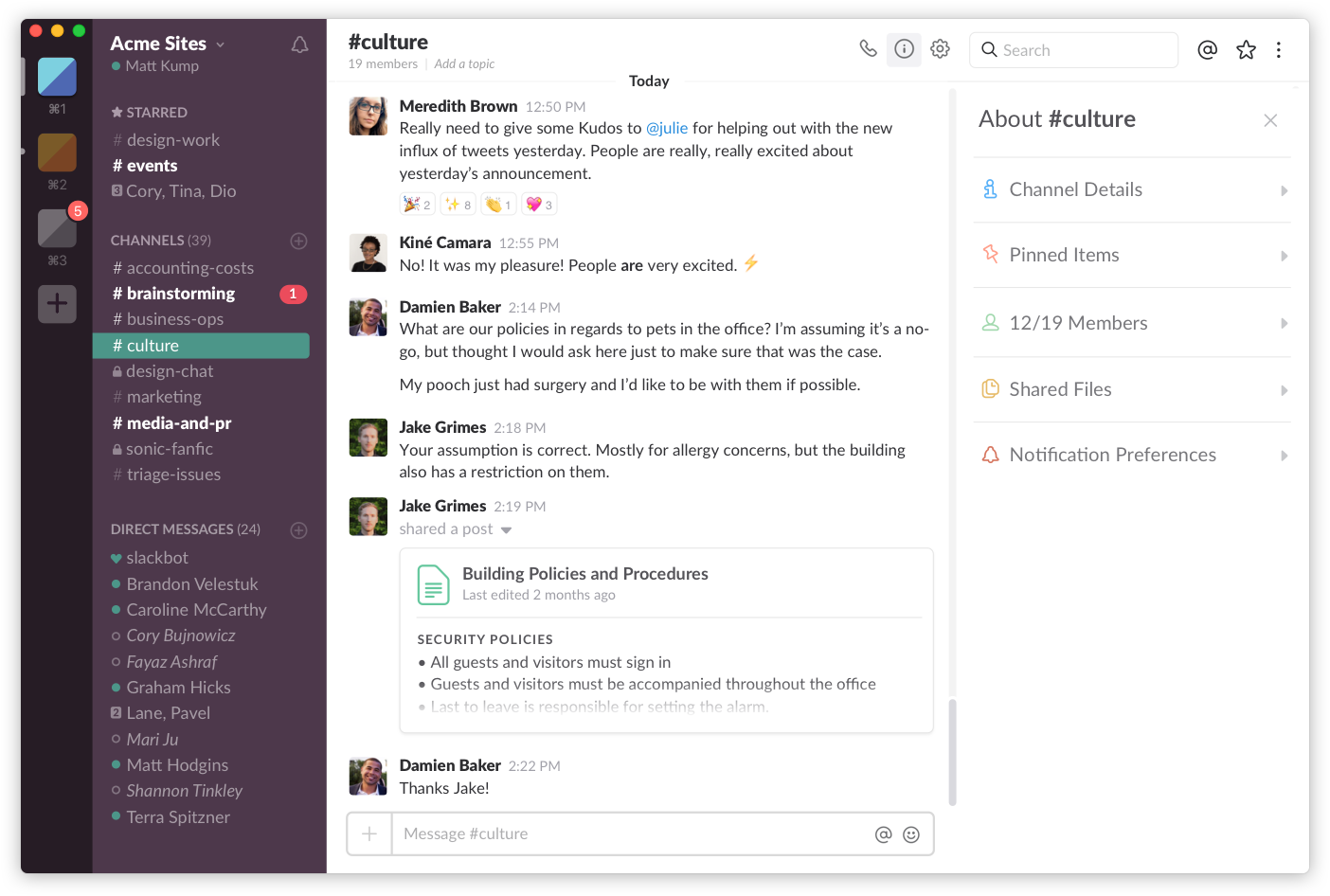
Proponents of remote work stump for increased productivity and well-being, while those against claim most people get nothing done within the comforts of their homes. What cannot be argued, however, is the surging popularity of remote work. The 2017 State of Telecommuting in the U.S. Employee Workforce Report notes employees in the U.S. workforce who work from home has increased by 115%.
At Bugle, remote work is an invaluable piece of our operating model that keeps our employees, partners, and collaborators connected and productive. But that doesn’t happen by accident. Effective remote work requires discipline, communication, and flexibility.
In this post, we break down how our remote model works, its benefits, and the dangers and challenges that teams must overcome in order to succeed.
How remote work actually works
A successful remote work model starts with people. Not everyone can work in a remote environment. Certain people function in dispersed settings better than others, and likewise, some people need more face-to-face contact than others. So before hiring someone, make sure to ask directly how they feel about remote work, and ask them for examples of how they’ve succeeded in such settings in the past.
You must hire people who are doers and producers, can thrive without extensive direction, and whom you can trust. Remote work won’t work if a manager can’t rely the person on the other end of the internet connection. Time spent worrying about what someone is doing is time stolen away from more important business.
Finally, bring in people who can write clearly, quickly, and persuasively. Written communication becomes everything in the absence of an in-person workplace, so building a team of people who can express their ideas across multiple digital mediums is a great foundation for a successful remote operation.
Takeaway: Hire hard workers who communicate well and whom you can trust, and trust those hard workers that you hire.
Clear communication and scheduling
Your calendar is your best friend in a remote work setting, and managing your calendar goes beyond simply scheduling meetings. A great practice is to block dedicated time slots on your calendar that don’t conflict with team meetings—whether it’s 15 minutes or an hour—to think and work.
We all dread days of drowning in emails and conference calls that interfere with actual work, so make a point to protect time to get done what you need to get done.
On a team-wide level, set up weekly hangouts to discuss progress on work, personal and company-wide goals, and just plain fun ideas. It’s a great way to flatten your organization, keep a pulse on everyone’s energy levels, and keep everyone feeling fresh and excited.
Frequent reviews of project and client work keep teams engaged and apprised of what others are working on. We love to bounce ideas off our colleagues, meaning design teams ask for feedback from writing teams, and marketing teams ask for $0.02 from the strategy team. Why do this? Because it keeps us honest, and sometimes the best perspective comes from someone who’s not so in-the-weeds and can offer an objective opinion.
Technology, tools, & platforms
The tools your team uses to facilitate communication, project management, and production are as important as the people performing work for your clients.
Asana

Image credit: https://asana.com/product
Asana is our project management platform of choice. It’s wonderful for creating and organizing project workflows, assigning tasks, sub-tasks, and interdependencies, and associated start/end and due dates. Moreover, it has a clean UI and excellent communication functionality, with the ability to comment, like, and tag teammates and project followers. Asana is also mobile-friendly and has reliable security and privacy features.
Join.Me

Photo credit: www.join.me/features
We use Join.Me to host video conferencing meetings. While there are a million options on the market for similar video needs, we love Join.Me for a few reasons: its friendly interface; mobile app functionality; and helpful features like screen- and desktop-sharing, markup annotations, and call recording.
Slack

Photo credit: www.Slack.com
Slack is our trusted day-to-day, minute-to-minute messaging app among our teams. Slack has everything you could want, from private groups to direct messaging and file-sharing, replete with searchable users and hashtags. (Even the emoji reactions are great.) Slack integrates with major virtual tools like Google Drive, Asana, Trello, and Dropbox, is free to download, and lightning-fast on desktop and mobile.
The benefits of a remote work model
Now, down to the brass tacks. A successful remote work model can greatly improve the efficiency of your organization and save time, money, and space for everyone involved.
Commutes are a burden. They waste time we could be spending working, stress us out, and can lead to problems like back pain. A report published by the Royal Society for Public Health in the UK found that 55% of people felt more stressed as a result of their commute.
The American commute keeps getting longer, up to 27 minutes each way as of last year. That’s an extra hour in the day, and that adds up. Moreover, the average American family spends $750/month on transportation, according to the Bureau of Labor Statistics. Project the math over 260 working days a year, and that’s a whole lot of time and money that could be spent adding value to your business, pursuing a passion project, or improving your lifestyle.
For an individual, remote work only costs what you’re already paying to live. For a company, a remote work model reduces the overhead costs of office space, from rent to supplies to coffee and cleaning services.
If this data weren’t compelling enough, chew on this one: remote employees are almost twice as likely to work beyond 40 hours per week, according to a recent Inc. report, and tend to be 20% more productive when they get to tackle creative projects remotely.
Health, happiness, & wellness
According to Penn State researchers, employees with the flexibility to control when and where they work tend to get an extra hour of sleep per night. And who can’t use an extra hour of sleep?
A 2011 study from Staples found that employees who worked from home experienced 25% less stress and have an easier time eating healthy. Moreover, 76% of those telecommuters were willing to work overtime and felt more loyalty to their companies.
Improved in-person collaboration
Now, a remote work model does not mean an extreme all-or-nothing swing from dreadful commute to no commute. That’s why we dedicate at least one day per week for our team to come together at Bugle headquarters in Washington, DC. It gives us a fresh energy and excitement to discuss project updates, new business development opportunities, and more. Sometimes we’ll order pizza, and everyone loves pizza.
We also host a company offsite retreat 1-2 times a year, as special extended times to reflect on our culture, accomplishments, challenges, and vision-setting for the future.
Talent & opportunities
One of the biggest benefits of a remote work model is that it eliminates geographic restrictions around working with prospective talent. Our network of partners stretches from Seattle to Mexico to Pittsburgh and New York. We can collaborate frequently and easily because we’ve removed physical limitations. And the bonus of expanding our circle of collaborators means more referrals, more leads, and more possibilities.
The challenges—and dangers—of remote work
Of course, nothing is as easy as it sounds. One size doesn’t fit all. Productivity and success depend on your preferred work style. If you’re easily distracted by the comfort of home, it’s best to take yourself out of that environment. If you work better around people, put yourself in a coffee shop or public library.
Here are just a few of the challenges and dangers of remote work:
Time zones and availability
While eliminating geographic restrictions is a big benefit of remote work model, it also brings challenges. Everyone on your time must be flexible to accommodate schedules, and that often means working outside of traditional 9-to-5 work hours. Sometimes, not everyone will be able to join a meeting because of time differences, and that can’t be avoided. This creates an additional burden to catch that person up.
Time management
Your personal life and work living under the same roof (often in the same room) can create a psychological challenge of ‘switching off.’ When does your workday start? When does it end? It can be hard to draw these lines, and as connected as we are these days, it’s natural to feel pulled back to your laptop and check emails at any hour of the day.
Set up reminders to take breaks (remember, your calendar is your best friend!) to help you keep a healthy balance. Schedule personal appointments—shopping errands, plans with friends, or the gym—to take yourself out of the home office. You can also turn off notifications on your phone and computer so you’re not pulled back into work after hours and against your will.
Accountability
This might be the most important lesson of all. Successful remote work depends on trust and everyone on the team delivering on their commitments. Remote workers need to be self-driven experts at managing their time since we don’t have others looking over our shoulders at all hours of the day. This means prioritization becomes your most important skill. Tackle your biggest, toughest task (you know, the one you’ll inevitably procrastinate on) first thing in the morning. Get it out of the way early, and know that’s likely to be the hardest thing you do all day.
Managing your own work is hard enough; don’t make it harder on yourself by falling temptation to household distractions. Prioritize what really matters now, and do the dishes later.
Be clear with your team about your time. This means messaging teammates and project leads with both known and unexpected outages as soon as possible, giving a heads-up if you’re pulled away by a household accident, and proactively setting time to catch up with teammates if you must miss a meeting.
What do you think?
Is a remote work model effective for your team and company? What challenges do you run into? What do you like, love, or fear about remote work? Leave us a comment below!
